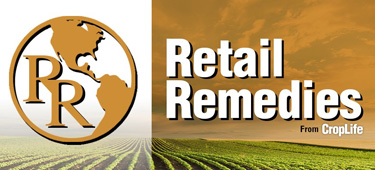The Keys to Successful Change Management in Agriculture

If there’s one constant the entire world has been dealing with these past two years, it’s change. Starting once the COVID-19 pandemic became a global phenomenon, every industry and end-user has been bombarded with changes.
At the 2022 Mid America CropLife Association (MACA) annual meeting in St. Louis, MO, the association invited three agricultural industry insiders for a panel discussion on the topic of Change Management. Although all three speakers focused on slightly different aspects of the question of change management, they all agreed on one major point: Change can be hard.
“It sometimes comes down to the individual,” said Gwyn Schramm, Head of Strategic Accounts and Licensing for Bayer Crop Science. “They might ask: ‘What happens if we change? What happens if we don’t change?’ If that happens, I remind them of one of my favorite quotes on change: ‘If you don’t like change, you are going to like irrelevance even less.’”

Participants in the “Change Management” panel discussion at the 2022 MACA Annual Meeting included, from left to right: Amy O’Shea, Certis Biologicals; Jeff Bunting, GROWMARK; and Gwyn Schramm, Bayer Crop Science.
According to another company represented on the MACA panel, Certis Biologicals, part of the reason many people are hesitant to change ties back to the unknowns that often crop up along the way. “In a perfect world, change is a straight path, from deciding to change to getting to the change goal,” said Amy O’Shea, President/CEO for Certis Biologicals. “But there’s always the unexpected issues that come up, such as a shark or tornado in the road ahead. That’s what makes change so difficult.”
Even older companies are having to deal with change management today. According to Jeff Bunting, Crop Protection Division Manager for GROWMARK, although his company has a 95-year history to rely upon, it regularly conducts meetings to discuss today’s key drivers for change in agriculture. “We do these every five years or so,” said Bunting. “We look at the things that could come, things that are probably already here, and things that are so far out on the horizon that we just don’t know yet what they will mean.”
Going forward, Bunting recommended to MACA attendees that their companies follow two simple methods: Remaining flexible and planning ahead further than ever before. “Today, it’s all about good planning,” he said. “It’s amazing to me how much earlier you have to plan to do things for the following year than we used to. But this gives everyone in the organization a better ‘line of sight’ into their farmer’s needs.”






